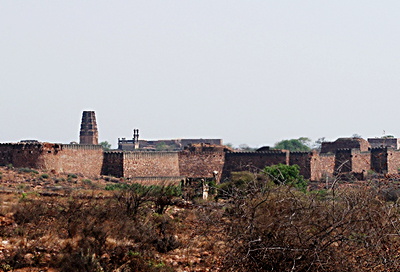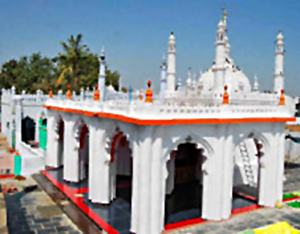 Cuddapah is one of the 23 districts of Andhra Pradesh and has been named after the city of Kadapa which is also the district headquarters. The Cuddapah district is part of the Rayalseema region. The district has further been subdivided into 51 mandals. The district is located towards the south central part of Andhra Pradesh and lies 8 kilometers to the south of the Penna River. Cuddapah is one of the 23 districts of Andhra Pradesh and has been named after the city of Kadapa which is also the district headquarters. The Cuddapah district is part of the Rayalseema region. The district has further been subdivided into 51 mandals. The district is located towards the south central part of Andhra Pradesh and lies 8 kilometers to the south of the Penna River. History of Cuddapah Cuddapah or Kadapa has historical importance since the BC era. During the BC era the district was connected with the Maurya Empire and in the third century AD the district was associated with the Satavahana Kings. The district was part of the area which was ceded to the British by the Nizam. The Cuddapah district was formed in the year 1808 and the name of the district was given by the British. Historical records say that Kadapa later known as Cuddapah had received its name from the Telegu word Gadapa which means threshold. Cuddapah district was also known by the name Hiranya State once upon a time. A historical legend associated with the district of Cuddapah is that during exile Lord Rama and his wife Sita wandered about this area and as a result this area has been identified as a part of the Dandakaranya. The Kadapa or the Cuddapah district has been ruled by the Pallava dynasty, the Chola dynasty, the Kakatiya dynasty and the Nizams of Hyderabad. Geography of Cuddapah The Cuddapah district has an area of 15,359 square kilometers. The boundaries of the district are as follows, Nellore, Anantapur in the east, Kurnool and Prakasam in the north, Anantapur in the west and Chittoor district lies to the South. The important rivers of the Cuddapah district are Penna, Kunderu, Sagileru, Chitravathi, Papaghni and Cheyeru. Crops which are commonly grown in the district of Cuddapah are rice, jowar, cotton, turmeric, maize, arhar, chillies, sugar cane, sesame, peanuts, and melons. Good quality timber and rare sandalwood are important features of the Cuddapah flora. Generally several dams, canals and reservoirs meet the water requirement of the district. Demography of Cuddapah The rural population of the district is as high as 1972.99 and the urban population are 600.48. The density of population in the district is 168 persons per square kilometer. The total literacy rate of Cuddapah is 64.02 percent. Among the literate population 76.98 percent of the males are literate and 50.76 percent of the females have attained the mark of literacy. The work force of Cuddapah district is equal to 43.95 percent. Culture of Cuddapah Cuddapah district is well known for its composite culture. Generally the people of the Cuddapah district are very hard working and hospitable in nature. The principal religion that is followed by the people Cuddapah is Hinduism. The other religions which are followed in the district are Islam, Jainism and Buddhism. It is said that due to the various religious as well as regional influences the district of Cuddapah has acquired its composite culture. Altogether it can be said that Cuddapah has a rich cultural heritage. Tourism in Cuddapah  Cuddapah district is home to a number of temples and forts. Each of the temple and fort is unique in its design and style. Some of the notable tourist destinations of the Cuddapah district are namely the Brahmamgari Matham. The Matham was built after the death of Sri Potuluri Veerabrahmam. The structure does not resemble a temple exactly but it has beautifully carved statues and walls. The other places of interest are the Gandikota Fort, the Lankamala Sanctuary, Tallapaka, Pushpagiri, Vontimitta, Devuni Kadapa and the Ameen Peer Dargah. Thus it can be said that the district of Cuddapah also earns from its places of tourist importance. Cuddapah district is home to a number of temples and forts. Each of the temple and fort is unique in its design and style. Some of the notable tourist destinations of the Cuddapah district are namely the Brahmamgari Matham. The Matham was built after the death of Sri Potuluri Veerabrahmam. The structure does not resemble a temple exactly but it has beautifully carved statues and walls. The other places of interest are the Gandikota Fort, the Lankamala Sanctuary, Tallapaka, Pushpagiri, Vontimitta, Devuni Kadapa and the Ameen Peer Dargah. Thus it can be said that the district of Cuddapah also earns from its places of tourist importance. Education in Cuddapah The district of Cuddapah is well advanced in the fields of academics. Several institutes and colleges in the district provide degrees in a wide variety of subjects including arts, science, nursing, architecture, engineering and almost all the other important subjects are taken care of by the educational institutes of Cuddapah. Some of the well known educational institutes of Cuddapah are DAW College, Sri Srinivasa Degree College, BVR College of Education and a lot more. Economy of Cuddapah The district Cuddapah has acquired the place of an industrial district in the state of Andhra Pradesh due to its rich mineral resources. Cuddapah can be called a heavenly abode of mineral wealth. Huge stocks of lead, barites and asbestos are found in the district of Cuddapah. Apart from the mineral resources which are abundant in the district of Cuddapah the economy of the district is also thrived by agriculture, as agriculture is the main occupation for the people of Cuddapah. The main industries of the region are Zuari Cements, India Cement Ltd and Corus India Ltd. Rakta-chandanam or red sandalwood is found only in the district of Cuddapah. As a result the district earns a lot of profit by selling of this important variety to the outside states. It is better to say that Cuddapah has a monopoly with the red sandalwood. | |||
| (Last Updated on : 9/02/2010) | |||
History of Kadapa
RPidugu
Popular Posts
-
KADAPA: Brahmotsavams of the historical Sri Sowmyanatha Swamy temple on the banks of Bahuda river in Nandalur will be performed in Vaikhana...
-
The Accenture Delivery Centers for Technology in India have been growing in the last few years and this would not have been possible ...

No comments:
Post a Comment